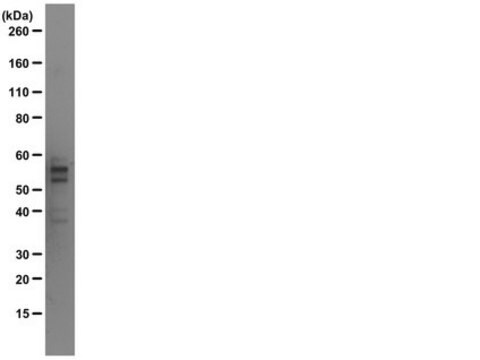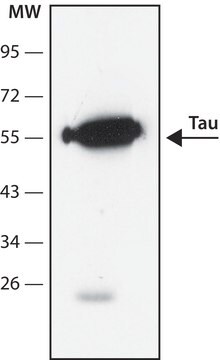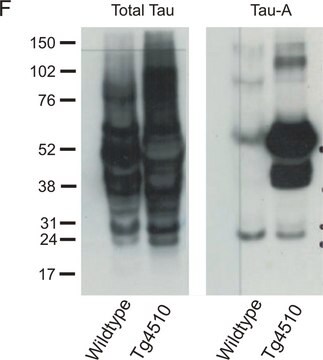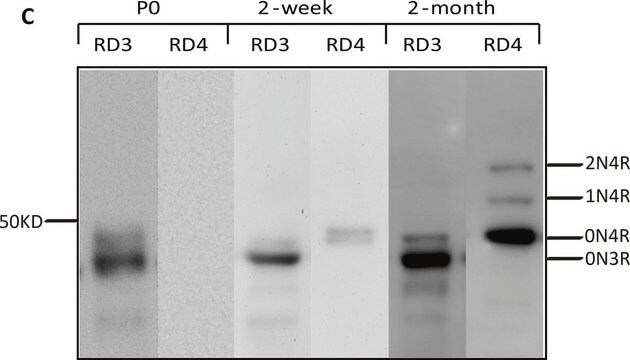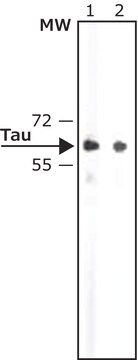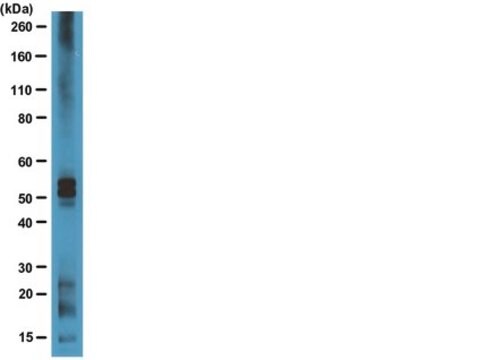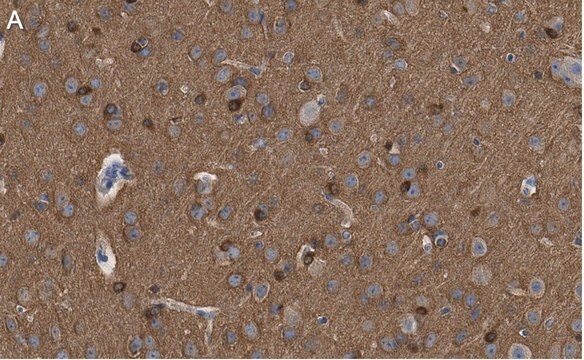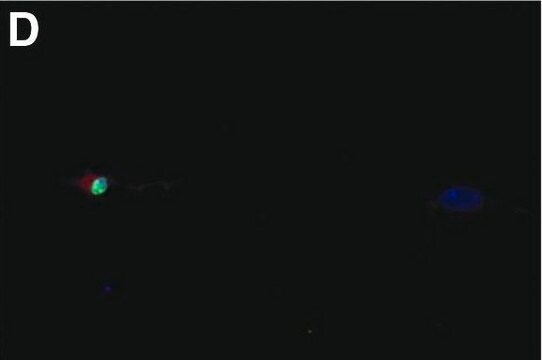MABN827
Anti Tau (MAPT) Antibody (not human)
mouse monoclonal, T49
Sinônimo(s):
Microtubule-associated protein tau, Neurofibrillary tangle protein, Paired helical filament-tau, PHF-tau
About This Item
Produtos recomendados
Nome do produto
Anti-Tau Antibody, clone T49 (Not human), clone T49, from mouse
fonte biológica
mouse
Nível de qualidade
forma do anticorpo
purified antibody
tipo de produto de anticorpo
primary antibodies
clone
T49, monoclonal
reatividade de espécies
mouse, rat, bovine
não deve reagir com
human
técnica(s)
immunohistochemistry: suitable
western blot: suitable
Isotipo
IgG1κ
nº de adesão NCBI
nº de adesão UniProt
Condições de expedição
wet ice
modificação pós-traducional do alvo
unmodified
Informações sobre genes
human ... MAPT(4137)
mouse ... Mapt(17762) , Mapt(281296)
rat ... Mapt(29477)
Descrição geral
Imunogênio
Aplicação
Western Blotting Analysis: A representative lot detected Tau in PS19 neurons treated with PBS or transduced with strain A or strain B FL a-syn pffs (Guo, J.L., et al. (2013). Cell. 154:103-117).
Qualidade
Western Blotting Analysis: 0.5 µg/mL of this antibody detected Tau in 10 µg of mouse and human brain tissue lysate.
Descrição-alvo
forma física
Outras notas
Não está encontrando o produto certo?
Experimente o nosso Ferramenta de seleção de produtos.
Código de classe de armazenamento
12 - Non Combustible Liquids
Classe de risco de água (WGK)
WGK 1
Ponto de fulgor (°F)
Not applicable
Ponto de fulgor (°C)
Not applicable
Certificados de análise (COA)
Busque Certificados de análise (COA) digitando o Número do Lote do produto. Os números de lote e remessa podem ser encontrados no rótulo de um produto após a palavra “Lot” ou “Batch”.
Já possui este produto?
Encontre a documentação dos produtos que você adquiriu recentemente na biblioteca de documentos.
Nossa equipe de cientistas tem experiência em todas as áreas de pesquisa, incluindo Life Sciences, ciência de materiais, síntese química, cromatografia, química analítica e muitas outras.
Entre em contato com a assistência técnica